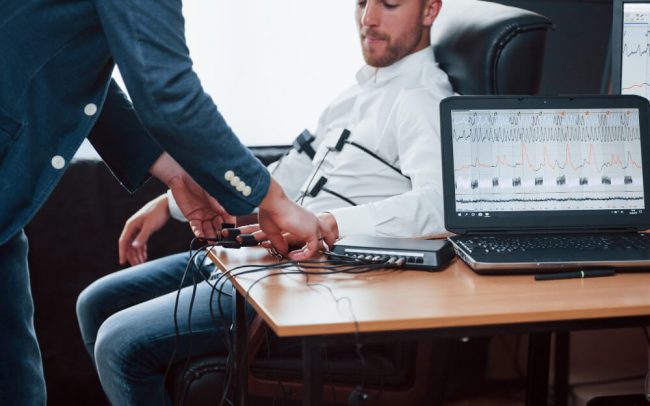What is the Safe and Sound Protocol?
The Safe and Sound Protocol: A Gentle, Science-Based Approach to Regulating the Nervous System
Many of the people I work with—whether they’re autistic, living with anxiety, recovering from trauma, or simply feeling “stuck” in a state of stress—describe the same experience:
“I know I should be able to calm down, but my body just won’t let me.” When this happens, it means your nervous system is doing its best to keep you safe, even when that “protection” shows up as stress, shutdown, or overwhelm.
The Safe and Sound Protocol (SSP) is a gentle, evidence-based tool designed to help your nervous system shift out of chronic defence mode and into a state where connection, safety, and growth become possible. I’m excited to offer SSP in my practice now because I’ve seen how life-changing it can be for people—especially those who have tried traditional strategies but still feel “on edge” or disconnected.
Whether you have heard of the SSP before or not, this blog should provide more of an explanation of what it is, how it works, and who might benefit from it.
Also Read: Managing Stress While Waiting for a Diagnosis
What Is the Safe and Sound Protocol?
The Safe and Sound Protocol is a listening-based therapy created by Dr Stephen Porges, the neuroscientist who developed Polyvagal Theory—a framework for understanding how our nervous system influences emotions, behaviour, and relationships.
SSP uses specially filtered music to gently stimulate the part of the nervous system that helps you feel safe and connected to others. You listen to this music through headphones at home under my guidance. It’s not about the content of the music—it’s about how the sound frequencies interact with the muscles in your middle ear and your vagus nerve. As a result, your nervous system learns, slowly and gently, that it’s okay to relax, engage, and connect.

The Science Behind SSP
According to Polyvagal Theory, your nervous system has three main states: ventral vagal (calm, connected), sympathetic (fight or flight), and dorsal vagal (shutdown, freeze). When you feel unsafe, whether the threat is real or perceived, your body automatically moves into protection mode. Sometimes, your nervous system can get “stuck” in that protective state, even when you are safe.
The Safe and Sound Protocol works by:
- Activating the social engagement system – Your middle ear muscles help you pick up the frequencies of human voices. When those muscles are engaged, your brain receives a “safety” signal.
- Stimulating the vagus nerve – This nerve plays a key role in calming your body and helping you shift into a connected state.
- Re-training the nervous system – Through repeated, gentle listening, your system learns to recognise cues of safety more easily.
More simply, the SSP helps your body stop scanning for danger all the time so you can feel safe enough to connect, focus, and enjoy life.
Also Read: Embracing Mental Health Care and Seeking Support
Who Can Benefit from SSP?
SSP has been used with:
- Autistic children, teens, and adults (including PDAers) who experience sensory sensitivities, social anxiety, or emotional dysregulation
- People living with generalised anxiety, panic, or PTSD
- Individuals healing from early attachment disruptions or relational trauma
- Children who struggle with regulation, attention, or behavioural challenges
- Adults experiencing burnout, chronic stress, or nervous system dysregulation
The SSP is not magic, but it can be a powerful foundation that makes other therapies more effective because your body is in a more receptive, regulated state. I have worked with clients who have seen significant changes as a result of the SSP, and I have even used it myself!

What SSP Feels Like
Listening to the SSP is surprisingly calming. You’ll listen to gentle music (there are several options depending on your preference) through over-ear headphones. The audio has been specifically filtered to target certain frequencies that signal safety to your nervous system.
Some people feel relaxed right away. Others notice subtle shifts over days or weeks, such as:
- More patience with loved ones
- Less reactivity to stressful situations
- Easier sleep or focus
- Feeling more “present” in conversations
- A sense of lightness or calm that wasn’t there before
Because SSP works directly with the nervous system, these changes can feel natural, not forced.
How I Offer SSP in My Practice
Because no one situation fits all, I offer a variety of options for using the SSP. When you work with me, you’ll generally get a tailored program that honours your pace, preferences, and lived experience.
Here’s what it typically looks like:
- Initial Consultation – We discuss your goals, history, and current challenges. I explain how SSP works and answer any questions.
- Preparation Phase – Before we begin listening, I’ll help you learn simple regulation tools you can use during the process.
- Listening Sessions – You’ll have a plan to listen to the SSP music for short segments at first—often 5–15 minutes—at home with my remote support.
- Integration Support – Between sessions, we check in about any changes, insights, or challenges you notice. I’ll guide you in applying new regulation skills in daily life.
- Follow-Up – SSP effects often continue unfolding for weeks after you finish listening. We’ll meet to reflect on what’s shifted and plan next steps.
I customise every program. Some clients move through SSP in a few weeks; others spread it out over months to allow their nervous system more time to adjust. Others may have the background or outside support to use the SSP with minimal additional guidance seamlessly.
Also Read: All About Pathological Demand Avoidance (PDA)
Why SSP Is Different from Other Approaches
You’ve probably tried strategies for calming down or focusing before, like breathing exercises, mindfulness apps, or even traditional therapy. These can be helpful, but they often rely on thinking your way into a calm state.
- The challenge is: You can’t talk your nervous system out of feeling unsafe.
- That’s why SSP feels different. It works from the bottom up, retraining the nervous system directly so regulation becomes easier and more automatic.
- Think of it like loosening a knot in your muscles. Once that tightness is gone, you can move more freely—without having to remind yourself to relax constantly.
Is SSP Right for You (or Your Child)
SSP might be a good fit if:
- You’ve tried other therapies but still feel easily overwhelmed or shut down
- Your sensory sensitivities make it hard to engage with life
- You or your child struggles with emotional regulation
- You want a gentle, non-invasive approach to support nervous system health
It’s not recommended for everyone. If you’re in acute crisis or have certain medical conditions, we’ll discuss whether SSP is appropriate and how to adapt it for safety.
My Approach: Neurodiversity-Affirming and Trauma-Informed
As a psychologist, I believe every nervous system has a good reason for how it’s functioning. The SSP is about creating conditions where you can feel more like yourself.
If you’re autistic, PDA, ADHD, or otherwise neurodivergent, we move at your pace, honouring sensory preferences and boundaries. If you have a trauma history, we’ll integrate grounding and safety practices so the process feels empowering, not overwhelming.
Getting Started
If you’re curious about the Safe and Sound Protocol, I’d love to connect. Whether you’re seeking more calm, a better connection, or simply a softer baseline for daily life, SSP can be a powerful step forward. Reach out now for more details.
Dr. Jessica Myszak, Dr. Jaime Long, and Dr. Aimee Rovane have significant experience performing psychological evaluations with children and adults. They offer both in-person and telehealth evaluations for children, teens, and adults looking for answers. In addition to seeing clients on the Chicago North Shore, they are able to work with families who reside in Alabama, Arizona, Arkansas, Colorado, Connecticut, Delaware, Florida, Georgia, Idaho, Illinois, Indiana, Kansas, Kentucky, Maine, Maryland, Massachusetts, Michigan, Minnesota, Mississippi, Missouri, Nebraska, Nevada, New Hampshire, New Jersey, New York, North Carolina, North Dakota, Ohio, Oklahoma, Pennsylvania, Rhode Island, South Carolina, Tennessee, Texas, Utah, Virginia, Washington, Washington DC, West Virginia, Wisconsin, and Wyoming! Dr Long is also now available to see clients in California. If you are interested in learning more about potentially working with them, you can visit their website here to get the process started.

